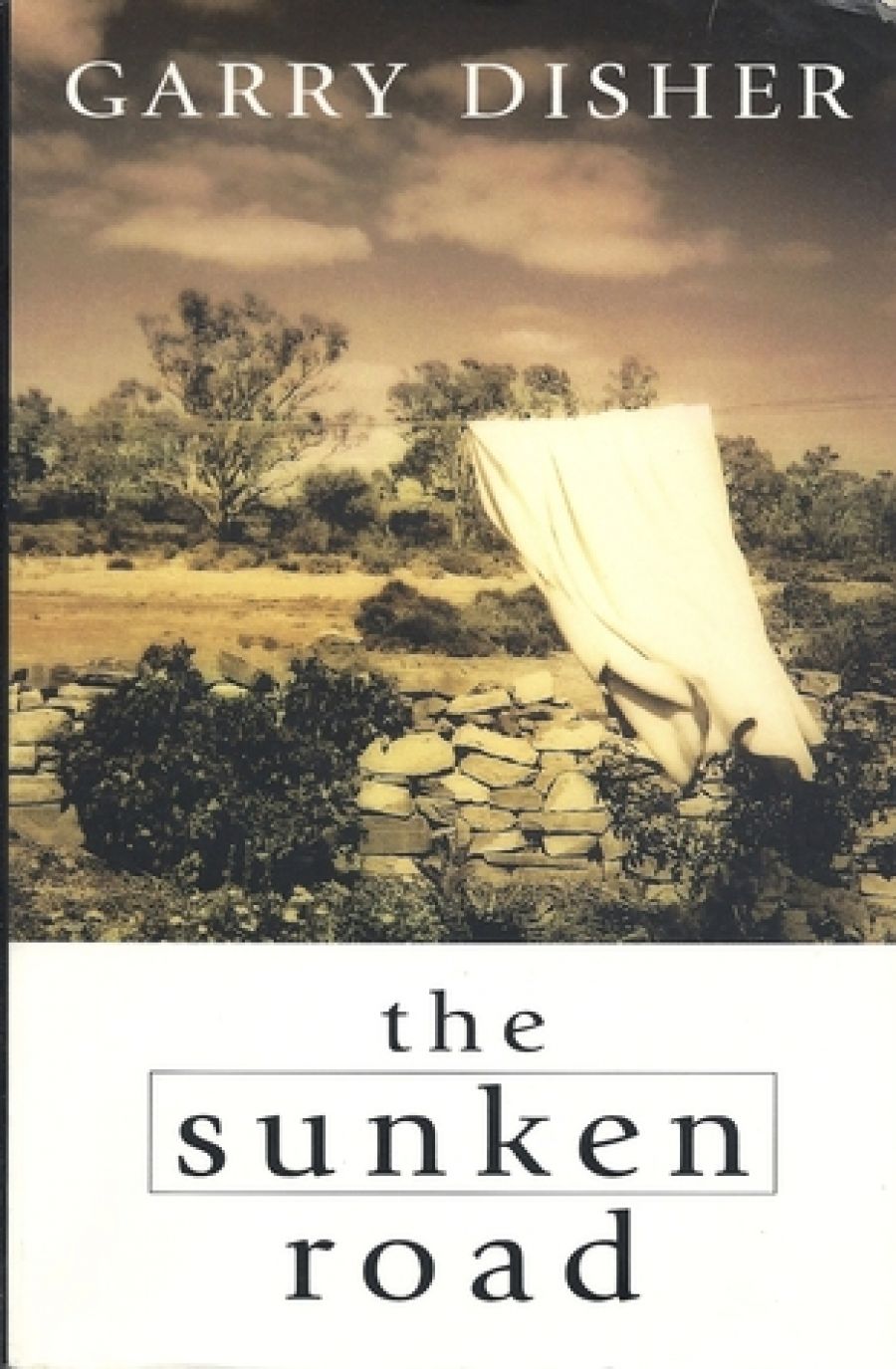
- Free Article: No
- Contents Category: Fiction
- Review Article: Yes
- Online Only: No
- Custom Highlight Text:
The Sunken Road is an ambitious novel which sets the crisscrossing lives of families in the northern highlands of South Australia against a temporal panorama of a century and a half and forces that extend far beyond state and continent. It is a compassionate but never sentimental account of a collective experience full of hope, pain, exploitation and double standards. At its centre is a strongly rendered character called Anna Antonia Ison Tolley.
- Book 1 Title: The Sunken Road
- Book 1 Biblio: Allen & Unwin, $19.95 pb, 224 pp
Anna’s father, Peter, lost his mother when very young (she was taken by a shark from the shallows at Henley Bay in Adelaide, during the Great Depression) and this establishes a context for two enduring forces in Anna’s life, The first of these is the distinctively masculine and sexist environment she grows up in during the 1950s and 1960s, where women’s contributions are widely taken for granted and men have always and unquestioningly left to fight and die in others’ wars (the two World Wars, Korea, Vietnam). The second is a need for love which is often pushed aside by notions of duty, economics and also by accidents; and the saddest thing about Anna is the guilt she heaps upon herself in connection with her quest for love.
At university in the 1960s, she protests against involvement in the Vietnam conflict and watches a string of boys she grew up with go to war and die there. Worse, she is unfaithful to Lockie, her old boyfriend, before he goes. Afterwards, there is a period of blankness, when the ‘black layers of self folded upon each other until she had only an intermittent and fragmentary awareness of others’, she goes to Europe and later returns to marry into a penny-pinching family, the Jaegers, who have too much religion and not enough love. Anna’s own son Michael becomes part of her’ cure’ for the memory of Lockie’s death. But then Anna allows herself to be driven by the Jaegers’ ‘constant, niggling, contestable, branch-line conversations’ into being unfaithful with another old schoolmate, Chester, and on the way back from seeing him, Michael is killed in a motor accident. The accident is not Anna’s fault. It is the result of a catalogue of mishaps, a fuel line blocked by water, a drunken driver coming in the other direction, Anna’s own absorption in what she’s just done. Anna takes even longer to get over her grief and guilt after this.
By the end, we see how Anna maintains independence and integrity through a long and difficult life, at considerable personal cost. As an old woman and a widow, we are told she will eventually leave the country where she grew up and move to a house by the sea in Adelaide, where her grandmother died. Her remaining child, her daughter Rebecca, enters into a lesbian relationship and, using donor sperm and artificial insemination, with her partner raises a daughter with whom Anna forms a close, if sometimes bemused, relationship. The begetting of Rebecca’s daughter is in contrast to the disastrous failure of a sperm bank for the champion rams of one of the well-to-do farming families Anna has known for most of her life. It is an ironic index of social change and of human continuities which endure.
The ‘sunken road’ is a stretch of rundown highway that Anna’s life turns around. Originally a family nickname for a WWI trench and also the location of a battle in the American Civil War, it is one of many examples of the way international events are shown impinging on the characters’ lives. The novel locates itself firmly in a postcolonial world concerned with questions of identity and legitimacy (one of its ironic motifs is Anna’s husband’s preoccupation with the local 150th Jubilee Celebrations). Rock paintings bear testimony to the presence of the land’s former inhabitants, the Ngadjuri people. However, in contrast to the novel’s compassionate review of women under patriarchy, it seemed to me there was little pressure to engage imaginatively with the loss and displacement experienced by the Aborigines. In a novel which deals so feelingly with history and what it leaves us, this seems a surprising omission.
There is a great sense of narrative amplitude, of details included to evoke the rhythms and textures of a large cast of characters. Disher has employed an unusual form of construction, consisting of sixty-one interconnecting chapters or micronarratives, each one dealing with such diverse topics as ‘Funerals’, ‘Fire’, ‘Loss’, ‘Hands’, ‘Parades’, ‘Begetting’, over a timespan of anything up to one hundred and fifty years. Chapters sometimes start in the nineteenth century and end in the future tense (‘She will walk shoeless on the sand where her grandmother was lost and let the water paint her feet’), producing an incantatory quality which is supported by sharply observed, and often beautifully written, prose.
The Sunken Road embodies some of the paradoxes and conflicts of the period it describes. It offers a sombre revaluation of settler values and hierarchies, whilst remaining very much within the terms of settler experience. And it experiments with narrative presentation whilst retaining those most traditional of strengths, a vibrant prose style and a powerful, compassionately evoked character through whose experiences the story is told.


Comments powered by CComment